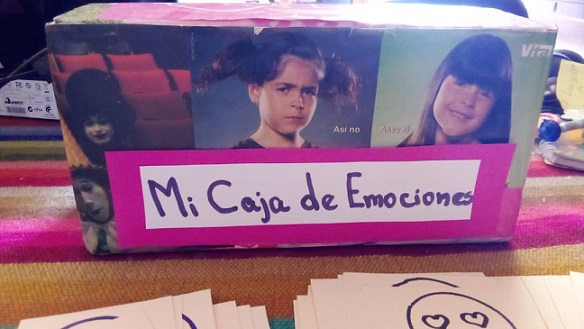
Source: @tomaspalomo
When my children were upset about something, they would just shut down like an oyster or start crying and would not talk about what was causing them anger, sadness, anguish, among others, especially the negative emotions. The positive emotions they were able to express with laughter and hugs. But we were concerned that they were not able to calibrate or manage emotionally, although they are only 5 and 6 years old, I think it is essential to learn it.
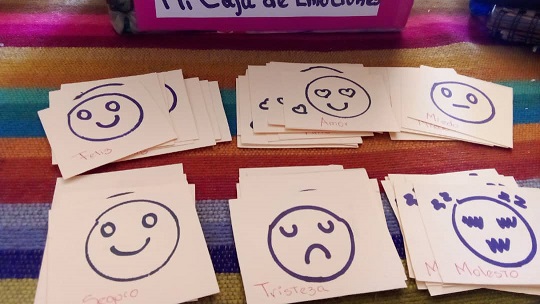
Source: @tomaspalomo
Then, searching here and there, we found this one in a strategy book that caught our attention for being simple in the elaboration of the materials, as well as in its application. My box of emotions.
Materials:
White or recycled sheets, you can also use cardboard if you have at home or cardboard. Colored pencils, crayons, colored chalk. Scissors and glue. A box.
Step 1. On the sheets of paper or cardboard we are going to draw some emojies that resemble the emotions, we can also write the emotion with which they correspond if they already know how to read.
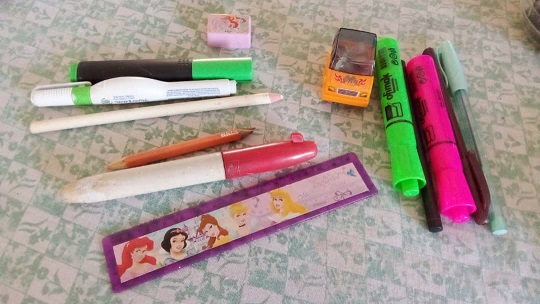
Source: @tomaspalomo
Step 2. Once we have drawn our emotions, we decorate the box where we are going to place them. The idea is that the box has a space for the children to put the card with the emotion and then they can uncover the box.
Step 3. Arrange the cards outside the box and explain to the children what each emotion is about and what are the facts that lead us to feel that way.
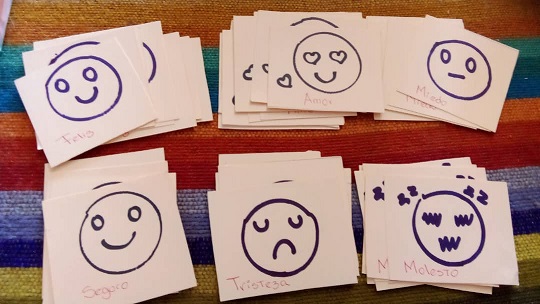
Source: @tomaspalomo
Step 4. Play with the children in my emotion box, they should not necessarily notice that they are upset about something, sad or upset, the ideal is to play when they are calm because that way when they are upset or irritated they can play as a way to let out what they feel.
Step 5. To play with the box of emotions we just need to ask the children: How do you feel? And have them take a card and talk about the emotion and what were the causes that originated that emotion. After they have finished talking they put the card in the box and we leave it there. At the end of the day or week, as you wish, you can take out the cards and make a tally of the emotions.
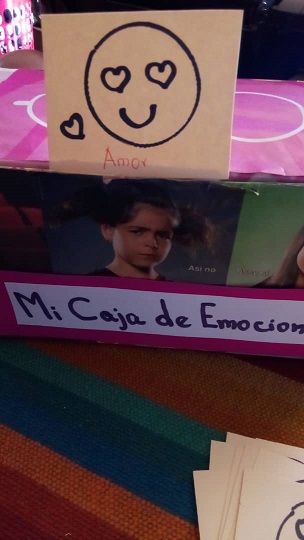
Source: @tomaspalomo
Step 6. Reinforce the expression of the emotions that make us uncomfortable and cause us discomfort to get them out of our system and achieve healing, control and establish mechanisms of action that teach us to control our emotions.
In our case, it has done Diego and Isa a lot of good, they begin to express and control what bothers them and they did not know how to handle it. Now, they have taught us that when we talk about our emotions and take the cards out of the box we feel better. As I say, it is a simple strategy that helps us a lot. I hope you can appreciate it.

Mi caja de las emociones.
Mis hijos al estar molestos por algo, solo se cerraban como una ostra o se ponían a llorar y no hablaban de lo que les causaba enojo, tristeza, angustia, entre otras, especialmente las emociones negativas. Las emociones positivas si las lograban manifestar con risas y abrazos. Pero nos preocupaba que no lograran calibrar o manejarse emocionalmente, aunque solo tienen 5 y 6 años considero es fundamental aprenderlo.
Entonces, buscando aquí y allá, encontramos en un libro de estrategias esta que nos llamó mucho la atención por ser sencilla en la elaboración de los materiales, así como en su aplicación. Mi caja de las emociones.
Materiales:
Hojas blancas o de reciclaje, se pueden usar también cartulinas si tienes en casa o cartón. Lápices de colores, creyones, tizas de colores. Tijera y pegamento. Una caja.
Paso 1. En las hojas o cartulinas vamos a dibujar algunos emojies que asemejen las emociones, también podemos escribir la emoción con la cual se corresponden si ya ellos saben leer.
Paso 2. Una vez que tenemos dibujadas nuestras emociones, decoramos la caja donde las vamos a colocar. La idea es que la caja cuente con un espacio para que los niños metan la tarjeta con la emoción y luego puedan destapar la caja.
Paso 3. Ordenar las tarjetas fuera de la caja y explicarles a los niños de que se trata cada emoción y cuáles son los hechos que nos llevan a sentirnos así.
Paso 4. Jugar con los niños a mi caja de las emociones, no necesariamente deben notar que están alterados por algo, tristes o molestos, lo ideal es jugar cuando ellos estén tranquilos porque así cuando estén molestos o irritados podrán jugar como una forma de dejar salir eso que sienten.
Paso 5. Para jugar con la caja de las emociones solo necesitamos preguntarles a los niños ¿Cómo te sientes? Y que ellos tomen una tarjeta y hablen de la emoción y cuáles fueron las causas que originaron esa emoción. Luego de que han terminado de hablar ellos meten la tarjeta en la caja y allí la dejamos. Al finalizar el día o la semana según como quieran ustedes pueden sacar las tarjetas y hacer un recuento de las emociones.
Paso 6. Reforzar la expresión de las emociones que nos incomodan y causan malestar para sacarlas de nuestro sistema y lograr sanar, controlar y establecer mecanismos de acción que nos enseñen a controlar nuestras emociones.
En nuestro caso a Diego e Isa les ha hecho mucho bien, comienzan a expresar y controlar eso que les molesta y no sabían cómo manejarlo. Ahora, ellos nos enseñaron que cuando hablamos de nuestras emociones y sacamos las tarjetas de la caja nos sentimos mejor. Como les digo es una estrategia sencilla que nos ayuda mucho. Espero la puedan apreciar.
Me encanta esta estrategia para trabajar emociones con mis niños, tomaré su idea.
Gracias por compartirlo con todos.
Saludos.
The emotion box is a truly meaningful strategy. Congratulations on your publication and its use not all parents pay attention to emotion management.
Congratulations @tomaspalomo! You have completed the following achievement on the Hive blockchain And have been rewarded with New badge(s)
Your next target is to reach 7000 upvotes.
You can view your badges on your board and compare yourself to others in the Ranking
If you no longer want to receive notifications, reply to this comment with the word
STOPCheck out our last posts:
This box is really amazing and educative. I love it